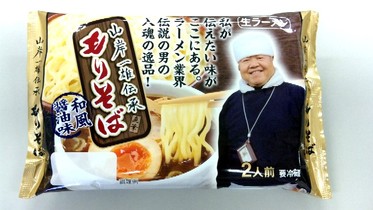
Japanese Foodways, Past and Present
Chapter 13: Ramen Connoisseurs Class Gender and, the Internet
Satomi Fukutomi
Ramen As A Japanese “National Dish”
Ramen from cheap/fast to a mastered art:
Ramen has become a national dish due to its general popularity (it is widespread) as well as its regionalization. It can be considered “local speciality food” in almost all regions.
There are even a ramen museums and theme parks!
It seems that ramen critics/consultants help keep the ramen “industry” moving - promoting over a variety of media. The internet, though, has been vital in this boom of ramen where both dry info and emotion are brought to attention.
Crossing Class Boundaries and Ritualizing Ramen:
“Eating Loud” and Gender in Ramen
Gendered Space in Virtual Consumption:
Chapter 13: Ramen Connoisseurs Class Gender and, the Internet
Satomi Fukutomi
Ramen As A Japanese “National Dish”
Ramen from cheap/fast to a mastered art:
- customers waiting up to 12 hours outside ramen shop of Yamagishi on his last day
- “national food” (consumed my nation)
- taste is cultural, political, economical product (authenticity is reinvented through prestige)
- prestige is tied to class, but class cannot be definitely defined
- connoisseurship is tied to class and therefore popular culture
Ramen has become a national dish due to its general popularity (it is widespread) as well as its regionalization. It can be considered “local speciality food” in almost all regions.
There are even a ramen museums and theme parks!
It seems that ramen critics/consultants help keep the ramen “industry” moving - promoting over a variety of media. The internet, though, has been vital in this boom of ramen where both dry info and emotion are brought to attention.
Crossing Class Boundaries and Ritualizing Ramen:
- In the past ramen was food for “blue-collars” and “rough masculinity”.
- Development of the culture of eating out (aesthetic, white collar starters, incorporation of fashion industry) have helped transform that image (1996 “Ramen Revolution” says Osaki). Rituals also imbedded in the atmosphere (clothing, shouts, decor, attracted customers).
- White collar men are targeted more because they are often on the go and wealthy enough to pay the 800 yen price.
- uri - selling point (this came in the style of the restaurant, whether it was “Japanese”, “Western” or “native/foreign hybrids”.)
- With “authentic Japanese” styles, the name of shop also makes a difference and often the shop ends of sending the message of “old Japan”.
- Women are also more targeted (appealing interior) and paying close attention to ettiquette (providing paper aprons).
- Part of the movie Tampopo where the man explains how to eat ramen correctly is an example of raising the level/expectation of the food itself - this exaggerates the ramen culture while noting some truths including slurping ramen and drinking up the soup from the bowl.
“Eating Loud” and Gender in Ramen
- Though dining out is considered classy, eating noodles loudly is a part of culture that can be dismissed despite the other baggage that goes along with eating out and high class life (etiquette, “what, where, and how to eat”).
- Ramen is loud and fast food (speedy prep, speedy eat, speedy next)
- Though now a lot of older ramen shops are targeted at men, shop owners are feeling the need to spread to women as well (feeling that they have a huge impact on market).
- Also the culture around men and women’s eating habits are very different.
Gendered Space in Virtual Consumption:
- Virtual Consumption (on the internet) is very popular with women because it includes talking ABOUT ramen.
- “Internet serves to establish community and popular culture and create identity” (267)
- (this can include cyber ramen nerds as well as ramen aficionados)
- However this alienates the older generation and blue collar consumers who are not as savvy with the internet.
- Women, though, are sensitive to image/identity (it is not exactly fashionable for women to go into old fashioned “men’s” ramen shops, but can be looked upon as “brave”).
- Gender boundaries are not removed
 RSS Feed
RSS Feed